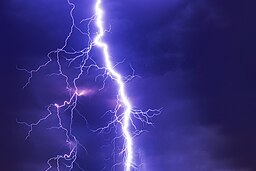“After this I looked, and there before me was a door standing open in heaven. And the voice I had first heard speaking to me like a trumpet said, ‘Come up here, and I will show you what must take place after this’” (Revelation 4:1).
Earlier in our study of Revelation chapter one, we encountered one of the most important verses in this book: “Write the things which you have seen, and the things which are, and the things which will take place after this” (Revelation 1:19). That passage functions much like a “Table of Contents” for the book of Revelation. To better understand that portion of Scripture and how it relates to our text from chapter four, let’s start with a look at its constituent elements.
Revelation 1:19 begins by saying, “Write, therefore, what you have seen…” (NIV). This encompassed the events that transpired in the opening verses of chapter one and everything that John, the author of Revelation, had witnessed to that point.
Next comes a reference to “…the things which are [now happening]” (AMP). In other words, our author was assigned to record certain events that were unfolding within the church of that era. We explored many of those topics in our look at Jesus’ letters to seven first-century churches in Revelation chapters two and three.
 Finally, we have this: “…write down… what is going to happen after these things” (GW). This is where the book of Revelation begins to talk about the future, or “…what will be after these things” (NET). With this in mind, we can say that this passage speaks of…
Finally, we have this: “…write down… what is going to happen after these things” (GW). This is where the book of Revelation begins to talk about the future, or “…what will be after these things” (NET). With this in mind, we can say that this passage speaks of…
- The past, or what John had witnessed to that point.
- The present, or the contemporary events of John’s day.
- The future, or what will take place later.
If that assessment is accurate, then it undoubtedly leads to a critical question: “Where are we in this ‘Table Of Contents’ today?” At the risk of over-analyzing this passage, the answer may hinge on the very last thing we read in Revelation 1:19…
- The NIV translation refers to “what will take place later.“
- The NKJ says, “after this.“
- The KJV and ASV render this as, “hereafter“
- The NASB has the words, “after these things.“
- The NLT reads, “the things that will happen later.“
These translations point us to a series of future events. But where do we fit on that timeline and what is the connection between Revelation 1:19 and our text from Revelation 4:1? We’ll unravel the answers to those questions next.
Image Attribution: picryl, Public Domain
“After this I looked, and behold, a door standing open in heaven! And the first voice, which I had heard speaking to me like a trumpet, said, ‘Come up here, and I will show you what must take place after this’” (Revelation 4:1 ESV).
As noted earlier, the second and third chapters of the Book of Revelation contain letters that were addressed to the seven churches referenced in Revelation 1:11…
“…’Write what you see in a book and send it to the seven churches, to Ephesus and to Smyrna and to Pergamum and to Thyatira and to Sardis and to Philadelphia and to Laodicea’” (ESV).
However, there is a subtle, yet significant, shift in our narrative as we transition from Revelation chapter three to Revelation chapter four. You see, the first verse of Revelation chapter four opens and closes with the words, “After this,” or, “After these things…” (NET). This leads to an important question: “After what things?” We can address that question by saying, “Here is what will follow these letters to the seven churches of chapters two and three.“
That brings us to Revelation 1:19 and the “Table of Contents” spoken of earlier: “Write the things which you have seen, and the things which are, and the things which will take place after this.” It’s interesting to note that the concluding words of Revelation 1:19 are the same words that open this  passage from Revelation 4:1. Those words are “meta tauta” in the original language of each verse, or “after this.” In other words, the end of Revelation 1:19 corresponds with the beginning of Revelation 4:1.
passage from Revelation 4:1. Those words are “meta tauta” in the original language of each verse, or “after this.” In other words, the end of Revelation 1:19 corresponds with the beginning of Revelation 4:1.
With these things in mind, we can begin the process of tying these elements together. First, Revelation 1:19 provides us with a broad structural overview of this book:
- “Write… what you have seen…” This addressed everything our author witnessed up to that point.
- “What is now…” references the seven letters that Jesus dictated to the churches of Revelation chapters two and three.
- “And what will take place later” identifies what will happen in the future.
Thus, we have the past, present, and future encapsulated in one verse. Our place in this “Table of Contents” corresponds with the present “church age” referenced in Revelation chapters two and three. This is evidenced by the cautionary message that Jesus repeated to each of those churches: “Let those who can hear listen to what the Spirit is saying to the churches” (Revelation 3:22 TLB). Those messages would carry little or no significance if they were irrelevant to our present day.
So where does that leave us as we enter Revelation chapter four? The answer is the future, for Revelation chapter four embarks on a prophetic journey that will take us into a period that is yet to come.
“After this I looked, and there in heaven was an open door. The first voice that I had heard speaking to me like a trumpet said, ‘Come up here, and I will show you what must take place after this’” (Revelation 4:1 CSB).
This passage marks a change from the pastoral letters of earlier chapters to the apocalyptic imagery and divine judgments that will follow. Thus, our text from Revelation 4:1 starts where those judgments begin: the throne of God. Unlike the preceding chapters in Revelation two and three, chapter four begins with a heavenly perspective that leads us to the first interpretive possibility concerning the future events detailed within this book.
That possibility involves the phrase “after this” in reference to a period that has come to be known as “The Great Tribulation.” To put it another way, the phrase “I will show you things which must take place after this” from Revelation 4:1 corresponds with “after the time of the churches” detailed earlier in chapters two and three. Therefore, we can say that this passage describes a post-church era.
From this perspective, the church has fulfilled God’s purpose on earth and has received a divine invitation to “come up here” in advance of that tribulation. This view holds that devout followers of Christ will have the privilege of joining Him during that tumultuous period to come. For instance, consider Jesus’ message from John 14:2-3 below and compare it to the passage from the book of the Biblical prophet Isaiah that follows…
“There are many rooms in my Father’s house. I wouldn’t tell you this, unless it was true. I am going there to prepare a place for each of you. After I have done this, I will come back and take you with me. Then we will be together” (CEV).
“Go, my people, enter your rooms and shut the doors behind you; hide yourselves for a little while until his wrath has passed by. See, the LORD is coming out of his dwelling to punish the people of the earth for their sins. The earth will disclose the blood shed upon her; she will conceal her slain no longer” (Isaiah 26:20-21 NIV).
When the voice of Revelation 4:1 says, “Come up here, and I will show you what must take place after this,” it may symbolize the departure of God’s people prior to the onset of the catastrophic events to follow. We’ll explore those topics at greater length as we progress through our study of this book.
“Immediately I was in the Spirit; and behold, a throne set in heaven, and One sat on the throne” (Revelation 4:2).
Upon receiving an invitation to “come up here,” in the previous verse, John (our apostolic author) promptly observed a throne in heaven. As we’ll see, everything John discusses in this chapter is described in relation to that throne.
 While a royal throne is relatively easy to visualize, it is little more than a highly ornamented armchair if we strip those embellishments away. A throne will not confer special status upon anyone who sits upon it, except perhaps to document his or her experience on social media.
While a royal throne is relatively easy to visualize, it is little more than a highly ornamented armchair if we strip those embellishments away. A throne will not confer special status upon anyone who sits upon it, except perhaps to document his or her experience on social media.
Instead, the significance of a throne is determined by two factors:
- The rightful owner of that throne.
- The authority it represents.
Those factors are especially true of this particular throne, for it serves to represent God’s sovereign authority, power, and leadership. The throne described here in Revelation 4:2 is the seat of governing power that holds dominion over everything that exists within the natural and spiritual realms. In fact, the magnificence of this scene was such that our author turned to the use of precious gemstones to capture its brilliance…
“And He who sat there was like a jasper and a sardius stone in appearance; and there was a rainbow around the throne, in appearance like an emerald” (Revelation 4:3).
Jasper is thought to be a translucent stone, possibly referring to a diamond. Sardius (also described as a carnelian or ruby in other translations) was a deep red stone. In addition, an emerald colored rainbow surrounded this throne, perhaps describing a sort of halo-like effect.
“Around the throne were twenty-four thrones, and on the thrones I saw twenty-four elders sitting, clothed in white robes; and they had crowns of gold on their heads” (Revelation 4:4).
Readers have long pondered the identities of these twenty-four elders. One view holds that these elders personify God’s people throughout history. Their thrones and white attire lend support to this idea based on two earlier passages from the book of Revelation…
“He who overcomes shall be clothed in white garments” (Revelation 3:5).
“To him who overcomes, I will give the right to sit with me on my throne, just as I overcame and sat down with my Father on his throne” (Revelation 3:21).
The reference to “twenty-four” may allude to the twelve tribes of Old Testament Israel, along with the twelve apostles of the New Testament era. Their cumulative presence totals twenty-four, which may serve to represent God’s people down through the ages.
Image Attribution: Photo by Stockcake
“And from the throne proceeded lightnings, thunderings, and voices. Seven lamps of fire were burning before the throne, which are the seven Spirits of God” (Revelation 4:5).
 Lightning is among the many wonders of our natural world. A lightning strike with an accompanying peal of thunder may be breathtaking or terrifying, depending on your proximity. Thus, it serves as an excellent representation of God’s immense power. That reference here in Revelation 4:5 is followed by a second appearance of “the seven Spirits” mentioned earlier in Revelation chapter one. Both examples likely allude to the Holy Spirit in all His fullness.
Lightning is among the many wonders of our natural world. A lightning strike with an accompanying peal of thunder may be breathtaking or terrifying, depending on your proximity. Thus, it serves as an excellent representation of God’s immense power. That reference here in Revelation 4:5 is followed by a second appearance of “the seven Spirits” mentioned earlier in Revelation chapter one. Both examples likely allude to the Holy Spirit in all His fullness.
“Before the throne there was a sea of glass, like crystal…” (Revelation 4:6).
These displays of thunder and lightning were accompanied by something like a crystal sea of glass. So this brief description of God’s throne features elements that reflect His power, as well as His characteristic qualities of peace, tranquility, and purity.
The latter portion of verse six then introduces us to four living beings…
“…And in the midst of the throne, and around the throne, were four living creatures full of eyes in front and in back. The first living creature was like a lion, the second living creature like a calf, the third living creature had a face like a man, and the fourth living creature was like a flying eagle.
The four living creatures, each having six wings, were full of eyes around and within. And they do not rest day or night, saying: ‘Holy, holy, holy, Lord God Almighty, Who was and is and is to come!’” (Revelation 4:6-8).
One commentator addresses the significance of these living creatures…
“Perhaps it is safest to say that the four faces are important because they present all of animate creation, in its utmost excellence – the lion is the mightiest of wild animals, the ox strongest of domesticated animals, the eagle king of all birds, and man is highest of all creation.” (1)
This passage tells us that these beings were characterized by lives of continual worship. In fact, their worship of God prompted these twenty-four elders to worship Him as well…
“Whenever the living creatures give glory, honor and thanks to him who sits on the throne and who lives for ever and ever, the twenty-four elders fall down before him who sits on the throne and worship him who lives for ever and ever. They lay their crowns before the throne and say:
‘You are worthy, our Lord and God, to receive glory and honor and power, for you created all things, and by your will they were created and have their being’” (Revelation 4:9-11).
Since a crown symbolizes victory or authority, these elders honored God by giving Him what He had already given them. In a similar manner, we honor God when we give Him the lives He has given us.
Image Attribution: Felix Mittermeier, CC0, via Wikimedia Commons
(1) Guzik, David. Enduring Word. (2023, April 27). Enduring Word Bible Commentary Revelation Chapter 4. https://enduringword.com/bible-commentary/revelation-4/


